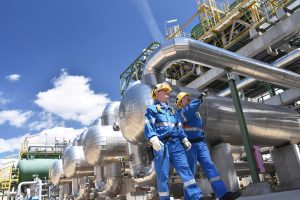Late last year, I began a new phase of my career as the Chief Artificial Intelligence (AI) Officer at Schneider Electric. Starting any new job is exhilarating and serving in this role is an honor. But being first can also feel a bit like flying the plane while building it. I mean, what exactly does a Chief AI Officer (CAIO) do? And why is he or she needed to help a company become an AI-based business?
In an Impact company like Schneider Electric, one that is deeply engaged in solving the climate change issue, the mission of a CAIO can be both exciting and, if I’m being honest, a bit frightening. After all, according to a BCG survey, seven out of 10 AI projects fail to bring relevant outcomes. That’s why the focus of my first 100 days as CAIO was to find answers to some important questions: Why do companies need AI in a first place? And how can we put AI to work to achieve optimal efficiency and sustainability?
1. Why do companies need Artificial Intelligence?
Early in my career, I worked for an automotive company that supplied parts to Toyota. Back then, we were facing some quality issues—big enough issues for Toyota to send some people from Japan to meet us in France to understand what was happening. Our first meeting began as most did—discussing the issues and expressing opinions. But after 15 minutes, the leader of the Toyota delegation stood up and said they were going to the hotel and would come back only when we brought data to the table. The message was clear: Opinions are interesting, but data is key. That hasn’t changed.
What has changed is the complexity and volume of data generated and available in our industry. The magnitude of information is far too big to be analyzed by the human brain or by traditional statistical tools. If we, or our customers and partners, want to capture insights, predict, simulate, and make agile decisions in volatile business conditions, AI is our best ally. Its prowess with handling repetitive and time-consuming activities will also allow us to laser focus our human superpowers on value-added tasks and better decision making to gain speed, scale, and agility.
2. Digital experiences: Making work and life more efficient
The way we work has changed for many of us over the past two years. And images of work in the future are blurry at best. One thing is certain though: AI can make work easier and more efficient.
Think about your countless video conferences in the COVID era. The interweaving of work and home fuels AI applications like background blurring and noise cancelling in video conferences. These convenient features spare my colleagues from noticing any untidiness or inopportune interruptions from pets and children. It’s both basic and brilliant. Even more importantly, AI also provides transcripts and automated subtitles for non-native speakers.
The change in customer behavior and growing expectations from support, e-commerce, and relationship building is another field where AI is enabling greater satisfaction and productivity. Ensuring we collectively work in the most efficient ways possible by using the many possibilities of AI is high on my agenda, as we welcome fresh AI talents to join forces with our in-house experts in our newly created AI Hub.

3. Where humans fail, AI brings hope
Convenience and efficiency at work are very important, but we have our sights on tackling even bigger challenges. We set the bar high with our ESG (Environmental, Social and Governance) commitments and propose the same to our customers. But addressing climate change is a knotty and multifaceted challenge. Expecting mass adoption of green behaviors for the sake of the planet may be too optimistic as we see humans making few changes on their own and few of us are ready to agree to downgrade their personal standards of living for the greater good of the humankind.
What if we could consume smarter and emit less greenhouse gases without having to make large-scale sacrifices? For example, if AI helps increase the efficiency of your production line by 10%, you can cut resource consumption by 10%. Similarly, if you optimize your building efficiency while maintaining or even improving occupant experience, you can cut energy use without sacrificing anything in return. That’s what we call a win-win, a way to impact less our planet and contribute to fight against climate change.
AI at SCALE
From connected products, to software through edge control, we have continuously developed our portfolio to support our customers and partners in their digital transformation and sustainability ambitions with the latest technologies and enablers. Providing them with full AI capabilities at scale is the next step in this journey.
As Chief AI Officer, I’m trying to reach this destination as fast as possible. Having an engaged and experienced squad of experts in our AI hub at my side helps me chart this course. I feel very lucky to board this plane alongside a solid crew full of human intelligence, who will push our artificial intelligence capacities skyward.
Hear from our Chief Digital Officer Peter Weckesser on How Artificial Intelligence helps companies become more sustainable.
Read this free white paper to discover how to improve energy efficiency and lower carbon footprint with digital solutions and collaboration.




